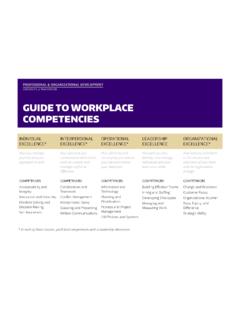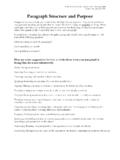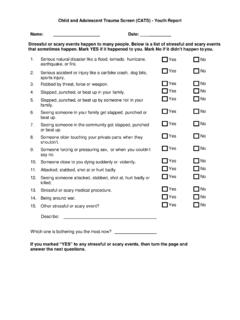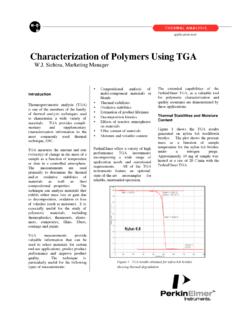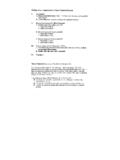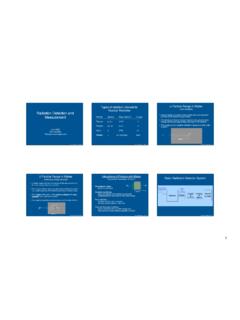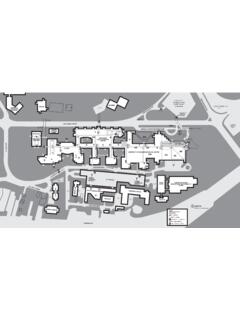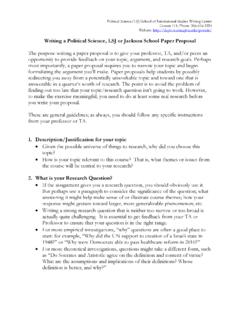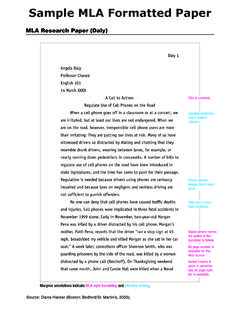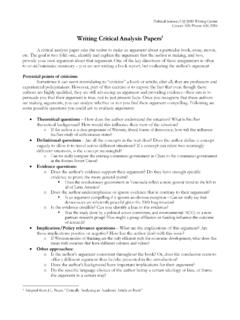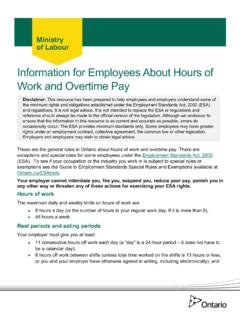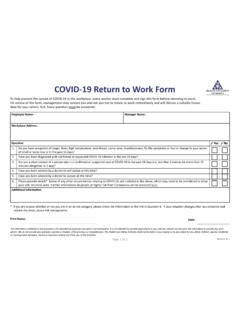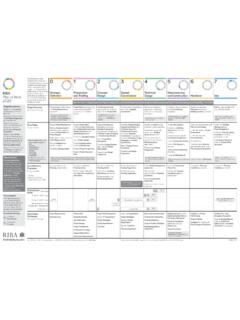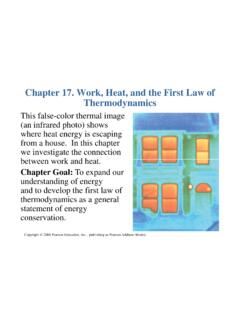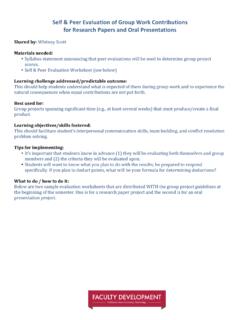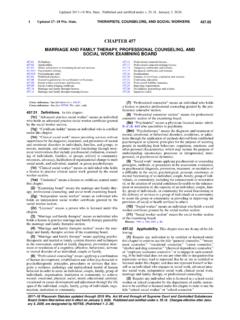Transcription of Trauma-Focused Cognitive Behavioral Therapy for Adults
1 Adult TF-CBT Harborview 2017 Trauma-Focused Cognitive Behavioral Therapy for Adults Trauma and its Effects Having traumatic experiences is very common. Most people will have at least one traumatic experience during their lifetime; many will have more. Everyone is affected by traumatic experiences; but the effects differ. There are differences in how severe, how long-lasting and how much the impact affects everyday life. When the distress is very intense or goes on too long, treatment that directly addresses the trauma can be very helpful. Traumas are often significant life experiences.
2 Passage of time or treatment does not change the fact that the trauma happened, or that it was very hard experience to go through. In some cases there are permanent changes in outlook and lifestyle like being more aware of safety. This is not always bad. The goal of treatment is to lower distress, help put the experience into perspective and help with return to normal functioning. What is Trauma-Focused Cognitive Behavioral Therapy ? Trauma-Focused CBT is a Therapy that directly addresses the impact of traumatic events. There are three main versions of Trauma-Focused CBT that have been proven in scientific studies to be effective for Post-Traumatic Stress Disorder (PTSD).
3 The Therapy can also help with depression and anxiety that goes along with PTSD. What are the Trauma-Focused Cognitive Behavioral Therapies and How Do They work ? The three Trauma-Focused CBT approaches are based on the theory that negative emotions connected to the memories for the traumatic event and how the person thinks about the traumatic event lead to PTSD symptoms. The three therapies take different approaches to reducing PTSD symptoms, but all three work equally well. Cognitive Processing Therapy (CPT): CPT focuses mainly on unrealistic and/or unhelpful thoughts a person has about their traumatic experience and/or how the trauma has impacted their beliefs about themselves, others, and the world.
4 These thoughts can cause the memories or reminders of the trauma to be very distressing because thoughts can lead to intense negative feelings such as fear or blame. The idea is to identify and change the unrealistic or unhelpful thoughts in a planned way. When the person thinks in a more realistic and helpful way, remembering or being reminded of the trauma is not so upsetting and the person can return to a normal life. Common Elements Treatment Approach (CETA): CETA focuses on specifically targeting the symptoms of posttraumatic stress, anxiety and/or depression in people affected by their traumatic experiences.
5 The goal is to choose the treatment components that match the specific symptoms of the person and then provide the treatment components that work for the specific symptoms that are most impacting the client. Usually sessions cover one treatment component at a time. Some components may take more than one session. The clinical target and the treatment components can be adjusted as treatment goes along, depending on how treatment is working. When the person is able to lower the distressing symptoms, they can return to a normal life. Adult TF-CBT Harborview 2017 Prolonged Exposure (PE): PE focuses on reducing the intense negative emotions that are caused by memories or being reminded of the trauma.
6 The main negative emotions that go with remembering are fear and shame. The idea is that facing up to the trauma memories or reminders in a planned way eventually wears down the negative emotions connected to the memories. This makes remembering or being reminded of the trauma not so upsetting. When the memories or reminders are not so upsetting, the person does not have to avoid them and can have a more normal life. Deciding Which Therapy to Choose The good news is that all three therapies work just as well. The decision can be based on what fits for the person and is agreed upon between the person and the therapist.
7 Discuss these options with your therapist. They will be happy to speak with you about how each Therapy works. How Long Does Therapy Take? Trauma-Focused CBT often gets results in a few months. Sometimes the person does not even need a whole course of Therapy to be better. Other times, especially for more severe or long lasting traumas, it can take longer. The key is that Therapy works because the person is actively trying to change in between Therapy sessions. The main elements of effective Trauma-Focused Therapy are practicing the key strategies that help with reducing symptoms.
8 that can mean facing up to memories or non-dangerous fears, getting active and back on track, or coming up with more helpful ways to think about the trauma and its impact. It is hard work , but it is really worth it. The therapist is there to help you succeed.
